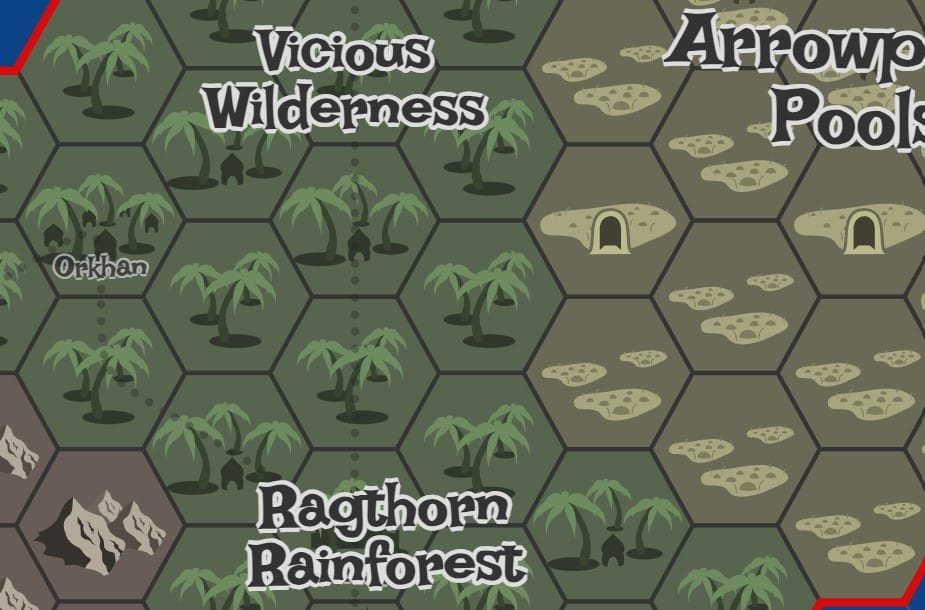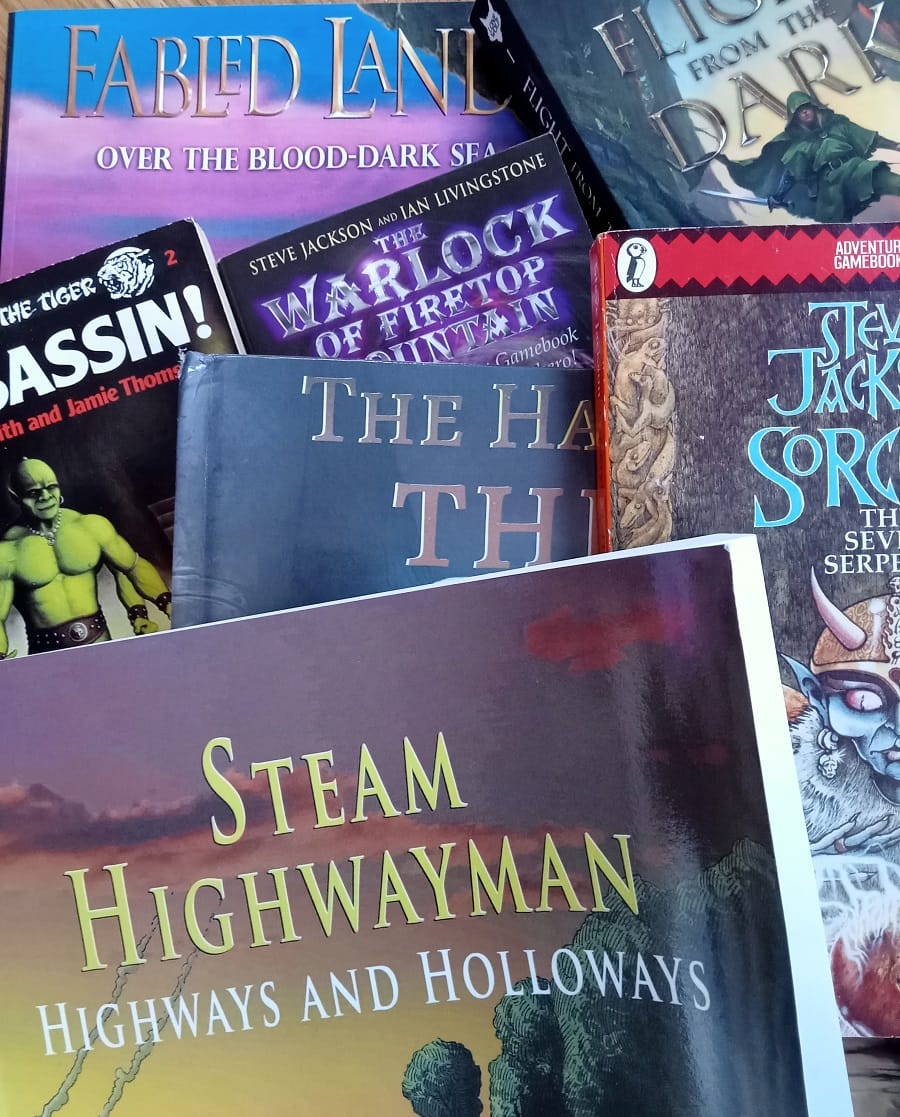This is a presentation of the Chaos Solo Emulator (name not final!), before it gets published as a Pay-what-you-want.
This builds on a system presented in two earlier blog posts with yes/no oracle plus scenes and events.
Here it is again in updated form!
Part of the delight of solo is doing our own thing. and experimenting with parts.
Chaos Solo Emulator Overview
The Chaos Solo Emulator aims to act as as a companion to the player when playing solo, answering questions and providing a structure for scenes and ongoing play.
It pairs with ways of creating ideas such as story dice, text prompts and d100 ideas tables. The final digital version might include some basic ideas tables.
There are several elements.
- Oracle Table - answers questions such as "are there orcs in this room?" and "will the bridge hold the weight of the cart?", as well as triggering some Events
- Scene Changes Table - this answers the question of whether an event happens as expected or not
- Events Table - detailing events that happen as the result of asking an oracle question, or seeing if a scene is changed.
- Extras - A list of characters, factions, locations and other entities that might pop up or influence your game. Mattack the Bounty Hunter, the Guild of the Gallows, the Sandriver Family and the Haunted Ruins of Arshor are probably extras. But the farmer who gave you directions to the town probably isn't...
- Threads - Similar to many emulators, these are the plot lines which are important to the story and your character(s).
- Position - this is the current position of the character(s) in relation to the adventure. Either Risky, Controlled or Desperate. This should be reviewed at the end of each scene. By default it's Risky, meaning there's a fair amount of danger. Controlled means that things have been going well for the character(s). and they're mostly achieving what they expected. Desperate means that things have gone badly or out of their control.
Mechanics
The tables use d20 rolls. Sometimes, Advantage is applied (rolling 2d20 and taking the highest), and other times, Disadvantage is applied (rolling 2d20 and taking the lowest).
I've chosen d20 as I wanted to use just one die, and d20 allows for many different results in random tables. It's also used in many popular games
More Information
Sometimes you'll want more information about an event or question. There are many ways to do this, using spark tables of adjectives and themes (such as Mythic's many d100 tables), images such as Rory's Story Cubes, text from GM Apprentice Decks, or flicking through a book (from a relevant genre) and taking a couple of random words.
The Oracle Table
The oracle question exists to answer questions that you're not sure of the answer to.
When asking questions, consider...
- Ask leading questions that are positive to the action. So if the answer is a Yes, it's going to lead to something interesting or dramatic. "Is there a troll in the room", "will the bridge collapse", "is Rani about to run away".
The basic chance of something being true is 50%,(11 or more on a d20).
- If you think the answer is very likely, use Advantage (chance of a Yes goes up to 75%). You can also add +4 to the result for Certain (increasing Yes to 91%)
- Or if you think the answer is very unlikely, use Disadvantage (chance of a Yes goes down to 25%). You can also take -4 to the result for Impossible (reducing Yes to 9%).
The table is basically
- a d20 table with Yes on 11+ and No otherwise
- A number ending in a 1 or a 0 is an extreme result (1, 10, 11, 20)
- a result ending in a 5 triggers an event.
| 1d20 | Oracle Table |
|---|---|
| 1 | NO! (extreme no) |
| 2 | No, (but an extra is involved) |
| 3 | No, (but such an interesting question) |
| 4 | No, (but kinda) |
| 5 | No. And an Event occurs |
| 6 | No, but... (something of equal weight) |
| 7 | No, but... (an Extra is involved) |
| 8 | No, but... (a Thread is involved) |
| 9 | No, but... (it is character related) |
| 10 | NO! (extreme no) |
| 11 | YES! (extreme yes) |
| 12-14 | Yes, but... |
| 15 | Yes. And an Event occurs |
| 16-19 | Yes |
| 20 | YES! (extreme yes) |
Design Notes
The 10 and 11 being extreme yes and no manages to keep these options open while using Advantage and Disadvantage or other modifiers. It also keep numbers ending in 1 and 0 to be the extreme results, which is easier to remember without referencing the table.
Likewise events on 5 and 15 keeps these options open when using multiple dice or using modifiers. And it's easier to remember that events are triggered on any roll ending in a 5.
Scene Changes Table
Envisage how the next scene should start and roll to see if the scene starts as you expect.
This is a d20 roll. However if the position is Controlled, use Advantage (two d20s, drop the lowest) as it's less likely that the scene is changed. However, if the position is Desperate, use Disadvantage (two d20s, drop the highest),
| 1d20 | Scene Changes Table |
|---|---|
| 1 | No, the danger increases. And roll again (or an Event occurs) |
| 2 | No, wouldn't it be bad if... or a Thread is involved |
| 3 | No, a character is missing from the scene or an Extra is involved |
| 4 | No, hostile forces oppose you or all is not as it seems |
| 5 | No, a Thread is involved |
| 6 | No, the environment is different. And an Event occurs |
| 7 | No, an Extra is involved (or here) |
| 8 | No, an obstacle blocks the way |
| 9 | No, a moment for reflection or an Extra is involved |
| 10 | No, a major detail is better / worse |
| 11-14 | Yes, the scene starts as expected |
| 15 | Yes, but an Event occurs |
| 16-20 | Yes, the scene starts as expected |
Design Notes
As I'm annoyed when I have to make more die rolls than needed, I've tried to fit the check and outcome into one table. To see if the scene is changed, interrupted and check for an event, its all on one table!
As in the Oracle Table, 5 and 15 triggers events.
Some of the Yes results include an alternative for an Extra being involved or a Thread involved. These are those for results that take a little bit more thinking, whereas involving an Extra or Thread is often a lot easier.
Events Table
When an event occurs, roll on this table. While resolving the event details, ignore anymore results that would trigger a second event.
This is a d20 roll. However if the position is Controlled, use Advantage (two d20s, drop the lowest) as the event is more likely to be positive. However, if the position is Desperate, use Disadvantage (two d20s, drop the highest),
| 1d20 | Events Table |
|---|---|
| 1 | Group negative |
| 2 | An Extra becomes a rival (or foe) |
| 3 | The danger increases |
| 4 | An unwelcome truth is revealed or Two threads merge |
| 5 | A Thread becomes harder |
| 6 | An unexpected encounter or an Extra is removed |
| 7 | An Extra takes action |
| 8 | Positive for an Extra |
| 9 | Foreshadow trouble or A new Thread emerges |
| 10 | A Thread becomes harder or an Extra takes Action |
| 11 | Group positive and negative |
| 12 | Negative for an Extra |
| 13 | A companion joins (or leaves) |
| 14 | A Thread is closed or a thing of wonder occurs |
| 15 | A Thread becomes harder |
| 16 | An important find or an Extra takes Action |
| 17 | Thread progress |
| 18 | A new Extra is revealed or a Thread is closed |
| 19 | A Boon occurs (treasure, a new ally, a chance to rest...) |
| 20 | Group positive |
Design Notes
Like the Changes table, some of the results which take a bit more thinking have alternates.
Finishing Up
Next it will be time to publish it as a Pay-what-you-want and then see what other feedback comes along!



